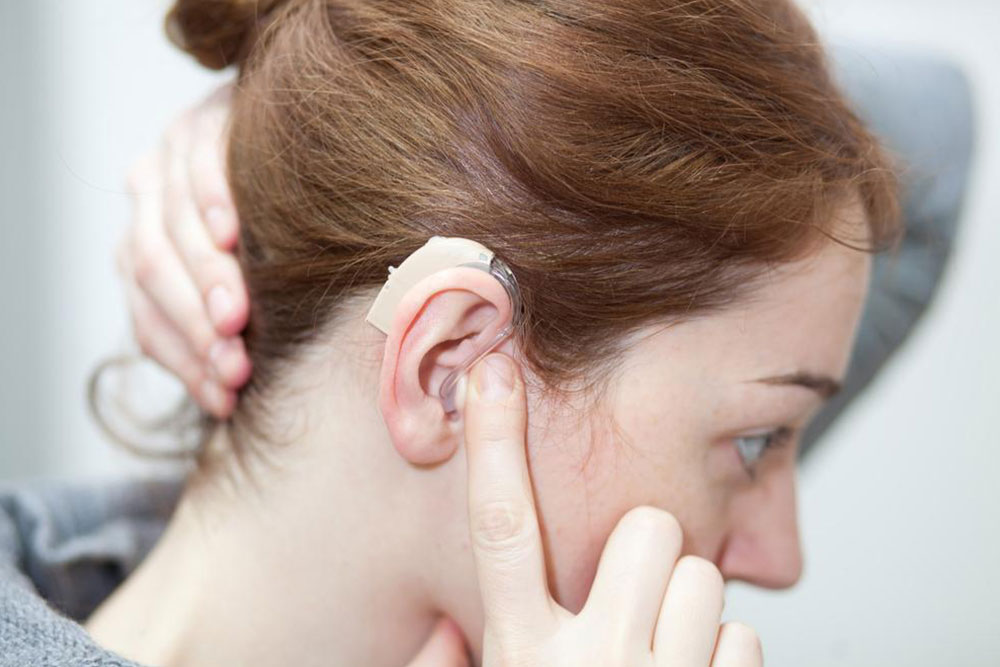Comprehensive Guide to Hearing Impairment: Causes, Types, and Prevention Strategies
This comprehensive article explores the various aspects of hearing impairment, including types, severity levels, diagnosis methods, and effective prevention strategies. It emphasizes the importance of early detection and proactive measures to preserve hearing health. Whether you're concerned about age-related decline or noise-induced damage, understanding these insights can help you take better care of your auditory well-being and improve your quality of life.

Comprehensive Guide to Hearing Impairment: Causes, Types, and Prevention Strategies
Hearing impairment is a common health issue that tends to develop gradually over time, especially among aging populations. While it is more prevalent among older adults, particularly those aged 65 and above, hearing loss can also affect younger individuals due to congenital defects, ear injuries, or exposure to loud noises. Understanding the intricacies of hearing loss, its types, severity levels, diagnosis methods, and prevention strategies is essential for maintaining auditory health and enhancing quality of life.
In the United States, nearly one-third of individuals aged between 65 and 75 experience some degree of hearing difficulty, highlighting its significance as a public health concern. The impairment can be classified into three primary categories based on the affected parts of the ear and the underlying pathology: conductive, sensorineural, and mixed hearing loss. Each type has distinct causes, symptoms, and treatment options, making accurate diagnosis crucial for effective management.
Types of Hearing Loss
Conductive Hearing Loss involves issues in the outer or middle ear that hinder sound transmission to the inner ear. Common causes include ear infections, earwax buildup, perforated eardrums, or abnormalities of the ear ossicles. This type of hearing loss is often reversible with medical or surgical intervention.
Sensorineural Hearing Loss results from damage within the inner ear (cochlea) or to the auditory nerve pathways. It is typically permanent and often caused by age-related degeneration (presbycusis), exposure to loud noises, certain medications, infections, or genetic factors. Sensorineural loss is the most common form of hearing impairment worldwide.
Mixed Hearing Loss combines elements of both conductive and sensorineural types, indicating damage in both the outer/middle ear and inner ear or nerve pathways. Proper diagnosis ensures the right combination of medical and auditory interventions.
Hearing Loss Severity Levels
Hearing impairment severity varies significantly among individuals. It is classified into four main stages, each impacting daily life differently:
Mild: Sounds between 25-40 decibels are detectable, but quieter sounds such as clocks ticking or water dripping may be missed. Conversations are generally manageable, but some difficulty may occur in noisy settings.
Moderate: Difficulty arises in hearing sounds between 41-55 decibels. Individuals might struggle to follow conversations without visual cues, and everyday sounds like doorbells or alarms might go unnoticed.
Severe: Hearing aids often become necessary as sounds below 70 decibels are difficult to perceive. Without amplification devices, understanding speech becomes increasingly challenging, leading to social withdrawal if untreated.
Profound: This most severe stage involves an inability to detect sounds below 90 decibels. Hearing aids provide limited benefit, and individuals often rely on alternative communication methods, including sign language.
Diagnosing Hearing Loss
Effective diagnosis is the cornerstone of appropriate treatment. Multiple assessments are employed to identify hearing issues accurately:
Physical Examination: Checks for wax buildup, infections, or structural abnormalities within the ear canal or drum.
Screening Tests: Simple procedures like whisper tests or tuning fork tests can indicate potential hearing loss. Though useful, they are initial screenings rather than definitive diagnoses.
Mobile Hearing Applications: Smartphone or tablet apps serve as quick screening tools for moderate hearing impairments, providing preliminary insights for individuals concerned about their hearing health.
Audiometric Testing: Conducted by audiologists, this comprehensive assessment involves wearing headphones to test responses to various sound frequencies and speech. It helps determine the degree and type of hearing loss accurately.
Prevention and Management of Hearing Impairment
While some causes of hearing loss are irreversible, especially age-related decline, proactive measures can significantly mitigate risk factors. Understanding these strategies helps individuals preserve their auditory health over time.
Avoid Exposure to Loud Noises: Long-term exposure to high decibel levels from concerts, machinery, or personal audio devices can damage inner ear structures. Use ear protection like earplugs or noise-canceling headsets when in loud environments.
Limit Duration of Noise Exposure: Take regular breaks to reduce cumulative damage, especially if working in noisy settings.
Proper Ear Hygiene: Regularly clean ears to prevent wax accumulation, but avoid inserting objects deep into the ear canal as it may cause injury.
Choose Quieter Appliances: Opt for appliances and gadgets that operate quietly to minimize noise pollution in daily life.
Regular Hearing Check-ups: Routine screenings can detect early signs of decline, allowing for timely interventions.
In cases of conductive hearing issues, medical treatments such as antibiotics for infections, removal of earwax, or surgical repair of damaged structures may restore hearing. For sensorineural loss, devices like hearing aids or cochlear implants are the primary options to improve hearing capacity.
Understanding the causes, types, and preventive measures of hearing impairment empowers individuals to take proactive steps towards safeguarding their auditory health. With advancements in technology and medical interventions, managing hearing loss has become increasingly effective, enhancing overall quality of life for millions worldwide.





